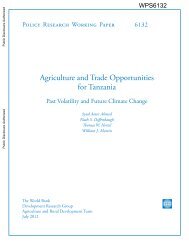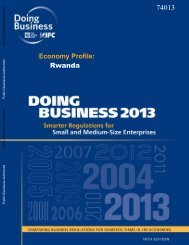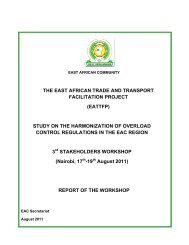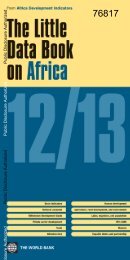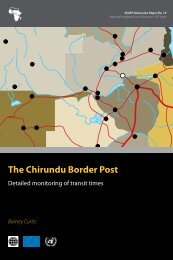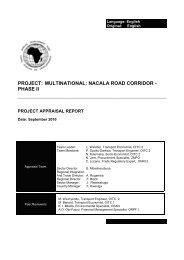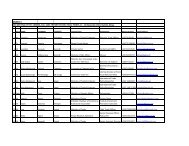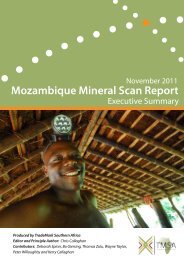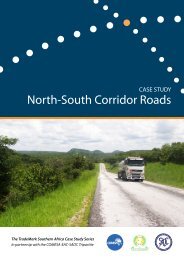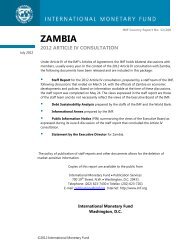Plant Health, Climate Change and Trade - TradeMark Southern Africa
Plant Health, Climate Change and Trade - TradeMark Southern Africa
Plant Health, Climate Change and Trade - TradeMark Southern Africa
Create successful ePaper yourself
Turn your PDF publications into a flip-book with our unique Google optimized e-Paper software.
10 <br />
The following adaptive phytosanitary strategies are proposed as technical <strong>and</strong> policy<br />
responses to climate change for the Tripartite Region:<br />
6.1. Strengthening national phytosanitary systems<br />
<strong>Climate</strong> change will bring new challenges in phytosanitary risk management that will require<br />
competent phytosanitary authorities <strong>and</strong> coherent regulatory frameworks. Policy options that<br />
bridge the gap between pure scientific knowledge <strong>and</strong> practical solutions will be key to<br />
effective adaptation strategies.<br />
Core capacity building in risk analysis, monitoring <strong>and</strong> surveillance, diagnostic services <strong>and</strong><br />
rapid diagnostic tools, inspections <strong>and</strong> border control, emergency preparedness <strong>and</strong><br />
response will be crucial in enabling developing countries to effectively manage new<br />
phytosanitary risks that may occur as a result of climate change.<br />
Improving access to international pest data bases <strong>and</strong> development of regional information<br />
exchange mechanisms that include distribution of pests <strong>and</strong> diseases <strong>and</strong> correlated<br />
ecological conditions including climate will assist in risk assessment, surveillance <strong>and</strong> control<br />
activities.<br />
6.2. Improving early warning systems<br />
Develop <strong>and</strong> ensure effective use of pest-monitoring <strong>and</strong> rapid response plans, participatory<br />
investigation, interception techniques, new screening technologies, forecasting <strong>and</strong> early<br />
warning networks.<br />
Surveillance monitors various aspects such as epidemiological, ecological <strong>and</strong> economic<br />
data to verify emergence of new markets, new trade channels, trade volumes <strong>and</strong> types of<br />
commodities. Risk-based surveillance in areas <strong>and</strong> places where pest introduction potential<br />
is high, such as ports of entry, will provide a focused means of early detection <strong>and</strong> thereby<br />
save resources.<br />
Developing <strong>and</strong> improving information networks for early warning systems is crucial <strong>and</strong> may<br />
be more cost-effective when done at a regional level whilst building on those of existing<br />
specialist institutions. The development of a notifications database of new pest outbreaks<br />
<strong>and</strong> interceptions in the region can be useful tools in developing early warning systems <strong>and</strong><br />
informing risk management decisions. Open-source information that is provided in real-time<br />
is therefore needed to strengthen national <strong>and</strong> regional data <strong>and</strong> allow decision makers<br />
additional time for planning <strong>and</strong> appropriate response actions.<br />
Developing early warning expertise <strong>and</strong> training of field workers on aspects such as<br />
sampling <strong>and</strong> trapping techniques <strong>and</strong> identification of exotic pests is required.<br />
6.3. Strengthening research<br />
<strong>Climate</strong> change may have positive, negative or no impact on individual plant pests <strong>and</strong><br />
diseases. A better underst<strong>and</strong>ing of the ecology of pests <strong>and</strong> their hosts, the correlations<br />
between them, <strong>and</strong> climate <strong>and</strong> impact modelling is necessary to predict the potential<br />
COP 17 -‐ <strong>Trade</strong>mark <strong>Climate</strong> change impact on phytosanitary risks





